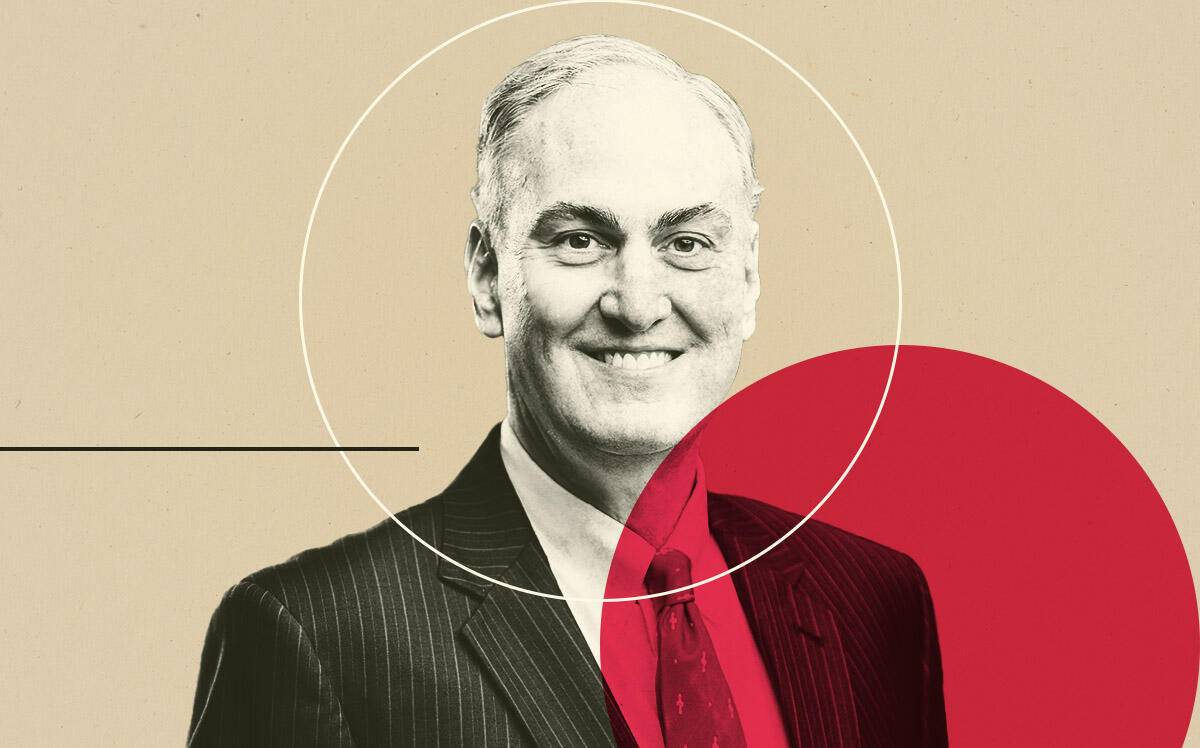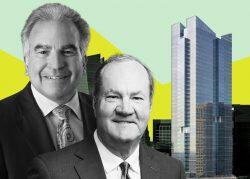 Hines’ Brookewater to be its biggest project since First Colony in Sugar Land
Hines’ Brookewater to be its biggest project since First Colony in Sugar Land
Trending
Q&A with Hines’ Southwest CEO Mark Cover
Hines Southwest Region CEO talks Houston office market, new projects and trends in the coming months

With a possible recession on the horizon, the Houston office market in flux and rising interest rates putting a damper on the market for new and existing homes, The Real Deal spoke with Hines Southwest CEO Mark Cover about the company’s recent and varied development projects in Houston and his outlook on the region’s office and residential markets.
Hines, a real estate investment and development company with properties and offices in virtually every major capital in the world, has been active this year in its home market of Houston. The company’s Brookewater development, an 850-acre, 2,400 single-family home master-planned community on the outskirts of Rosenberg, an exurb southwest of Houston, is in the works.
Hines opened the Brava on the site of the Houston Chronicle’s former parking garage in December 2021. The 46-story trophy tower — now the tallest residential building in Houston — was the last project company founder Gerald Hines was intimately involved with before he died at the age of 95 in 2020.
And in a very difficult Houston office market, Hines was able to secure a big tenant for Texas Tower, the company’s latest downtown Houston highrise.
The Houston office market is in a state of flux. What are you seeing when it comes to office numbers and trends? What do you expect to see as we go into the fourth quarter and in the coming months?
Clearly, brand-new trophy buildings are doing very well around the country, not just in Houston.
The older buildings are doing less well. The 20- to 25-year-old buildings are sort of up and down. If those buildings’ landlords and managers can generate leasing momentum, it begets momentum, That’s really good. If you have negative momentum going the other way, that of course is a very bad thing. So it is kind of turning into a group of haves and have-nots pretty quickly.
With returning to the office, I think we’re getting close to a tipping point. The South is generally outperforming the rest of the country. Across our portfolio and in Houston we are at about 55 percent based on card key check-in data. It seems to creep up a little bit each week.
What’s difficult about the question is that tracking occupancy by Kastle Systems card taps on a daily basis is somewhat unreliable. So nobody actually really knows what full occupancy is. In the past, we did not track occupancy the way we do today. We’re seeing Tuesdays to Thursdays are a lot busier than Mondays and Fridays as far as card taps go. We’re seeing the number of taps creep up pretty steadily, half a percent to 2 percent after kids started going to school in August.
Employers are flexible, but with the economy heading the way it is, it will probably behoove many employees from a career standpoint to show up at the office.
If layoffs and cutbacks begin to happen, people will sense they need to be in the office if they want to stay employed. There’s just a human natural proximity bias I guess for managers.
How are other Houston office submarkets doing compared to downtown?
Some of these once-iconic buildings in Houston and nationally, they’re going to have some problems. Outside of the Sun Belt, some cities are having an outmigration of both employers and employees.
If I look at our portfolio, I see tenants that are moving or renewing their leases. And depending on the industry, the tenants are taking generally less space than they had before, as their leases roll over.
We just don’t know how all this is going to eventually play out yet. Enough of it has not happened.
Anecdotally, in Houston, they’re taking 10 to 30 percent less space as they roll over their leases. There’s an exception with the oil companies in Houston. For the most part, they’re staying flat or even with their space. Some are downsizing, and we have a few requests to grow their office footprints.
So all of this is to be determined. One thing I think is relevant on this topic is the oil rig count.
The rig count is back up into the upper 700s, which historically has been a solid level of activity.
So that tells me that the oil companies and the tangential businesses are not getting rich but they’re probably doing fine. That’s a good number, so if that amount of activity continues, and there’s near-term uncertainty around global needs for energy, that’s pretty positive for Houston and the office market.
Hines is known for developing striking office, retail, multifamily and mixed-use properties, but the company’s portfolio is quite diverse. Hines’ subdivision deal in Rosenberg, for example. What is the thinking behind this deal?
So we got into this business around 2005, and we’ve been at it for quite a long time.
We started in DFW, and we’ve done a series of projects here. This is the largest master-planned community that we’ve done in Houston. We’ve done master plans of this size in DFW and Austin.
The beautiful thing about a large master-planned community is, first of all, you can put more amenities in, and you just have a bigger base to work off of. So you can create more robust parks and trails and green spaces that are attractive from a quality-of-life standpoint.
If you look at Houston to the north, northwest, west and southwest, you have significant growth.
Houston is estimated to create 95,000 jobs this year, which is a fantastic number. Houston, year-in and year-out, creates an average of 100,000 jobs. We think the job growth in the region will bring the demand. This project will take five to six years to complete. That feels like a long way out, but the years catch up pretty quickly. So we anticipate building our way through this project and delivering lots to top home builders, both private and public, very fast.
When we do these projects, we’re looking at school district quality; we’re looking at zoning laws that give Hines the ability to create a neighborhood. We’re trying to get variations in our price points for the homes that are going to be sold. One of the things about the suburban location, you can provide a little bit more home for a family at a little bit less price.
With this location, it will have pretty good access to the employment centers of Houston on the west and southern parts of the city, toward the Texas Medical Center.
if you look across the southern part of the city, where this project has access. The growth of Houston’s medical center is creating high-quality jobs. And the life sciences push that Houston is making makes us very excited about this project.
We’re also excited about the variety of homes at different price points we were able to work out with this master-planned community. There will be homes built on 40- to 60-foot lots. We think it just creates a more varied neighborhood with more green space and trails and many other spaces these types of neighborhoods typically have.
There’s some waterway land with this project where we want to keep as much as we can and turn it into something that’s accessible for the people that live there. It’s going to feel different than other projects in that part of the city.
Is there anything else TRD’s readers should keep an eye out for in Texas’ big real estate markets or anywhere else?
What do you do with too much office space? We’re still not through all the space we built a few years ago. What do you do with too much retail space? I think we will see some more office conversions. It’s not easy to do. You drive by one office building and then another office building, and they kind of look the same as you drive by in the car. But the bones on the inside really matter. That’s how you will determine whether they’re convertible to residential, but there will absolutely be examples. I don’t think it’s going to fit the majority of office buildings. Unfortunately, many won’t have flexible bones.
We’re looking at acquisitions. We’ve got several others we’re looking at in other cities. We’ve looked at some in Houston, but we couldn’t make the numbers work. The buildings have to be very depressed in value.
Attainable housing is an issue all over the United States. It is not as acute in Houston because our headline prices per foot are not as high as the coastal cities, but that’s still a real focus for Hines, whether it’s rental or for purchasing homes. We are very interested in making attainable housing. We’re going to see smaller lot sizes to be able to create that home with not quite as much land to get the prices down.
And assuming the economy is gonna be a little bit tough for the next few months, we think it’s a really good time for us and other developers to take special land that’s been set aside to work on planning it, getting it set up for development as the market turns.
Again, we’re in a choppy period here, but where the opportunity arises, we’ll do mixed-use projects. We all know a great neighborhood when we see it and experience it. So we’re going to create that intentionally as much as we can with the right conditions.
Downtown Houston has become more residential over the last 15 to 20 years or so. Do you think that trend will continue?
I think there will be a lot more residential downtown. Starting more or less 15 years ago, residential housing was very nominal. We’re getting really good traction. I do think there’s a tipping point, and we’re there.
Our Brava project, which is our newest offering downtown, started leasing in February, before some parts of the building were really complete. And we’re a little bit north of 50 percent leased.
We feel really good about that.
We had a drop off during Covid with our other downtown assets in the 70-percent leased range.
So our other downtown classic assets are back north to 90 percent. There’s real interest in downtown living.
Houston’s in an environmentally sensitive area with exposure to hurricanes, storms and flooding. How does Hines go about developing with that in mind?
On the public side, there’s a lot going on here, and I’m not probably the best person to speak to that. But the county, the city and the state are all very focused on it. There’s always a funding need. You know somebody told me we need $5 billion of federal money to build up our climate mitigation infrastructure, and there’s probably $1 billion available.
You always have that issue, but they really are making progress on the infrastructure side in creating relief for places for water to go during a big storm event. Making changes to the building codes. They’re making developers build water retention areas. That’s a move that’s already beginning to pay dividends. There’s a lot of work to go on the infrastructure side, but real headways are being made.
For Hines, with our single-family master plans, that’s a part of the reason we’re creating so much green space. We feel like those green spaces can retain water during these climate events.
For our downtown buildings, with the hurricanes and the floods, we’ve certainly been very active post-Harvey. We’ve added and are adding more flood control doors to make sure the downtown Houston tunnel system doesn’t entrap people during a major flood event.
Other owners have done that as well and continue to think that way. They also want to build resilience around flooding and storm events. It’s very important. We’ll see how it unfolds.
This is a bit different than floods, but you know we have so many beautiful, sunny, sometimes very hot but sunny days in Houston. As technology continues to advance I think we’re going to be able to capture a lot of light and convert it to electricity for our properties.
I look forward to those opportunities as they unfold over the next few years.
This interview has been edited and condensed for clarity.
Read more
 Hines’ Brookewater to be its biggest project since First Colony in Sugar Land
Hines’ Brookewater to be its biggest project since First Colony in Sugar Land
 Hines’ legacy project is the rhombus-shaped Brava
Hines’ legacy project is the rhombus-shaped Brava
 Hines’ Texas Tower lands big-time natural gas tenant
Hines’ Texas Tower lands big-time natural gas tenant




